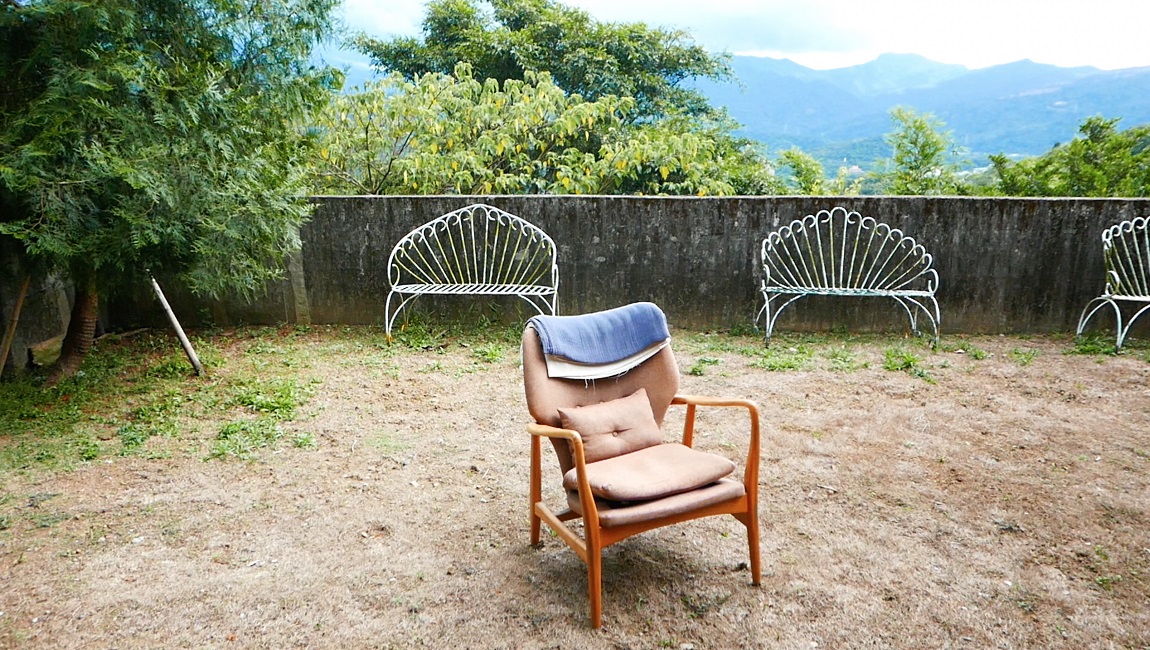Paris’ Centre Pompidou Museum has been commissioning short works from a veritable who’s who of international filmmakers since 2015. The curators present these artists with a very simple, loose prompt: Où en êtes-vous? (roughly translated: Where Are You?). They are then allowed to submit whatever they like in response — the most recent entry is Joanna Hogg’s Presage, a 12-minute travelog of a trip to Los Angeles. Tsai Ming-liang’s 2022 entry is titled Where do you stand, Tsai Ming-Liang?, a variation on the prompt which the director has somewhat cheekily responded to via a short film mostly about chairs. But of course, the Malaysian-Taiwanese director has more on his mind than that, turning his 22-minute effort into a stunningly beautiful treatise on the limbo of the Covid era.
Beginning with a shot of his cat, the film then segues into a montage of different chairs, each of which has been positioned inside various abandoned houses that surround Tsai and friend/muse/leading man Lee Kang-sheng’s rural home. Each shot is static, and varies in length from over a minute to only a few seconds (reflecting perhaps the most quickly cut film of Tsai’s entire career). The chairs are mostly old, of various colors and shapes, while the houses themselves are empty and entirely dilapidated, with bare concrete floors and crumbling walls. Pools of standing water are everywhere, but there are also open windows — sans glass, of course — that reveal luminous sunshine and lustrous green trees and plants just outside. A series of intertitles relay bits of information to the viewer: that Tsai “likes chairs,” and that he once created an installation piece where he placed 49 of them in a gallery and then sold coffee to attendees to sip on while they sat. After the event, he says that he painted the chairs, at which point the film proceeds to show a number of canvases arranged in the same abandoned spaces as the chairs.
Eventually, Tsai cuts to the inside of his own home; the cat reappears alongside some furnishings; Tsai himself does not live inside the crumbling facade of ancient buildings, despite his love of filming such spaces. Soon, the paintings of the chairs become shots of a different kind of canvas, a series of lovingly detailed portraits of Lee and Anong Houngheuangsy, his co-star in Days. They are each represented separately, then paired together, followed by a self-portrait of Tsai, and then a final piece showing him with Lee. Think of it as notes toward a hypothetical narrative that only exists in this nebulous, sketchy form.
The chairs themselves are interesting objects; the fact that they are empty suggests an absence, but that they have been set up at all also suggests the possibility of a visitor. This is Tsai’s quarantine limbo, literal isolation but with the hope of some impending human connection. His paintings seem to be an attempt at literally conjuring his friends, recreating them in some form or another. Of course, isolation and loneliness are key motifs in virtually all of Tsai’s feature-length films, along with recurring water symbolism and architectural passageways from darkness into light. These are Tsai’s affinities, what author Brian Dillon considers the relation the artist has with their “chosen and not chosen — Talismans? Tastes? Sympathies? Familiars? Superstitions?” All of the above are laid bare in Tsai’s search for connection.
Published as part of InRO Weekly — Volume 1, Issue 18.







